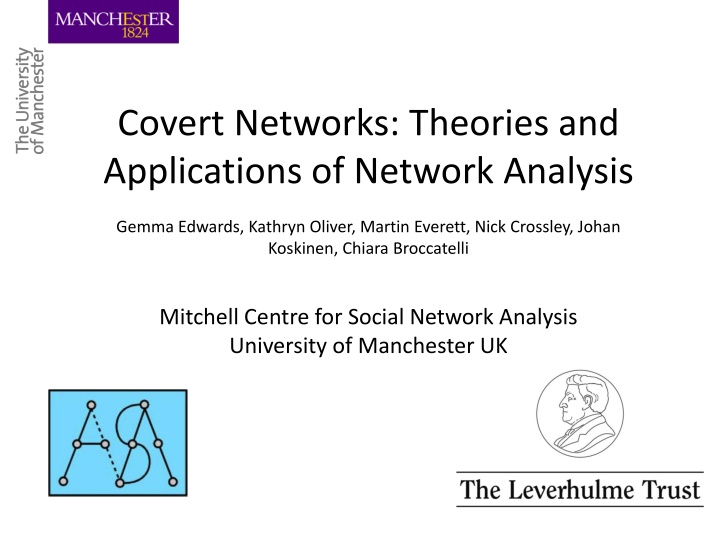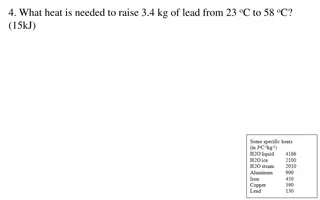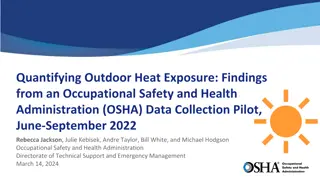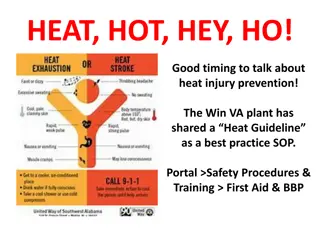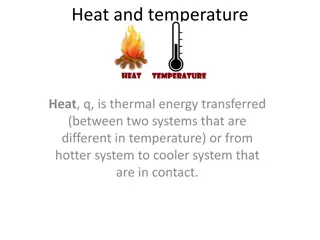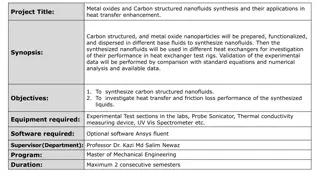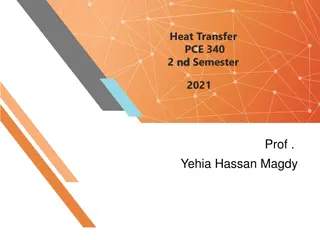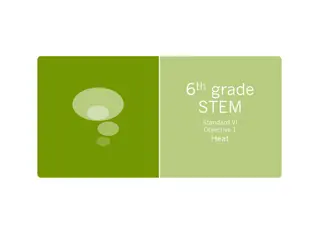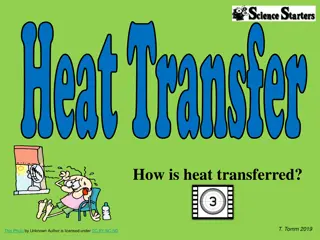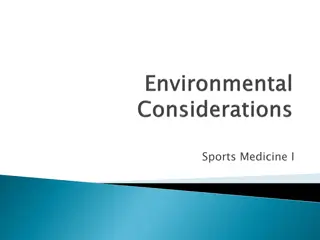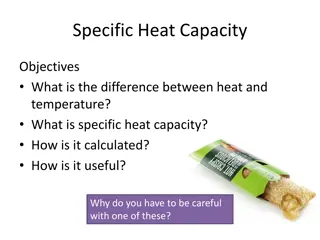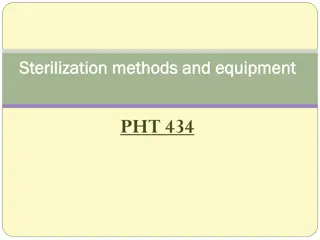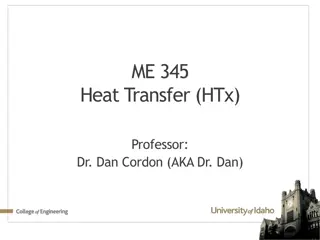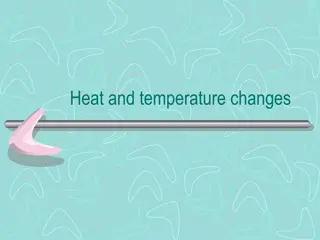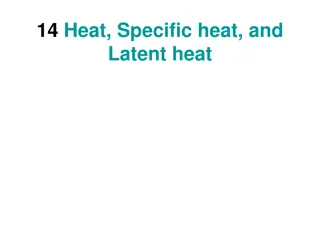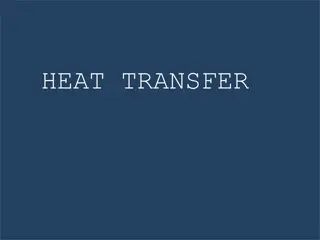Heat Transfer Calculations for Different Geometric Configurations
Various heat transfer scenarios involving free convection, including calculating heat loss from heated plates, cylinders, and horizontal surfaces in different environmental conditions. Learn how to estimate heat transfer rates and distances necessary to achieve specific Rayleigh numbers.
Download Presentation

Please find below an Image/Link to download the presentation.
The content on the website is provided AS IS for your information and personal use only. It may not be sold, licensed, or shared on other websites without obtaining consent from the author.If you encounter any issues during the download, it is possible that the publisher has removed the file from their server.
You are allowed to download the files provided on this website for personal or commercial use, subject to the condition that they are used lawfully. All files are the property of their respective owners.
The content on the website is provided AS IS for your information and personal use only. It may not be sold, licensed, or shared on other websites without obtaining consent from the author.
E N D
Presentation Transcript
Covert Networks: Theories and Applications of Network Analysis Gemma Edwards, Kathryn Oliver, Martin Everett, Nick Crossley, Johan Koskinen, Chiara Broccatelli Mitchell Centre for Social Network Analysis University of Manchester UK
Collecting and Analyzing Covert Social Network Data (Leverhulme Project, 2013-16) Increased interest in studying covert networks (dark, underground, clandestine) using SNA, but many unresolved substantive and methodological questions: - Not least questions about the concept itself: secrecy as the defining feature, but secrecy of what? From whom? When? - What makes a network covert , and how covertness is achieved, varies and demands sociological attention - Terrorist networks and criminal networks are prime examples, but many others (from social movements to swingers) Aim to create an archive of covert network datasets and then use it for theoretical exploration, empirical analysis, and methodological development
Why? Accepted that covertness affects network structure. But lack of empirical evidence for many claims made about the structure and dynamics of covert networks: Importance of pre-existing ties Networks by design A secrecy-efficiency trade off (Crossley, Edwards et al 2012) And some of the central structural properties are contended: (degree) Centralized or decentralized? Dense or sparse? The variability of claims also suggests that our ability to generalize about covert networks and interpret results from specific datasets is weak, and that there is a further need for comparison with overt cases
Centralisation 60.0% Morselli Caviar Morselli Caviar core 50.0% Author s interpretation Decentralised Centralised 40.0% Cockbain Offenders Y Morselli Al Quaeda Cockbain Offenders X 30.0% ETO B&F Steam Turbines Noordin Top B&F Switchgear 20.0% Morselli Al Quaeda core B&F Transformers Gimenez-Salinas Acero 10.0% Gimenez-Salinas Juanes Gimenez-Salinas Mambo Gimenez-Salinas Jakes 0.0% 0 2 4 6 8 10 12 14 16
Density 60.0% Gimenez-Salinas Acero 50.0% Author s interpretation Sparse Bali 1 Bali 1 (Koschade) Dense 40.0% Denser over time B&F Steam Turbines B&F Transformers Australian Embassy 30.0% Philippine Ambassador Bali 2 Christmas Eve bombings B&F Switchgear 20.0% Morselli Al Quaeda Madrid 2004 Natarajan NYC Heroin Dealers core Gimenez-Salinas Mambo Gimenez-Salinas Juanes 10.0% Demiroz ETO Noordin Top Gimenez-Salinas Jakes Morselli Caviar Demiroz ETO periphery Natarajan NYC Heroin Dealers 0.0%
Methodological development and challenges A need to address key methodological questions and challenges posed by covert network data: If/how different from overt networks? How can data be collected and quality issues be addressed? Do we need new SNA methods/measures to analyse covert networks? Can covert networks be identified through certain properties? How can we deal with acute problems of boundary specification, partial and missing data? What statistical models could be developed to help academics and practitioners deal with these issues? Hope to provide some answers, but also a useful reflection on, and assessment of, the methodological challenges of working with covert network data
What we have done so far Started to unpack and operationalize covertness as a set of variables that can be used in generating hypotheses about structural properties (absorption, aims, actions, consequences, segregation) Identified over 200 hypotheses in existing literature about covert networks Collated and cleaned over 50 covert network datasets (some our own, most from other studies freely available / provided by authors) SNA on datasets is just beginning
Thanks! For more information and resources visit our project website: http://www.socialsciences.manchester.ac.uk/res earch/research-centres-and-networks/mitchell- centre/our-research/covert-networks/ The following will shortly be available on the website: Working paper: Oliver. K (2014) Covert network data: a typology of effects, processes, practices and structures List of the covert network datasets currently in the archive
